TfL - Freedom of Information
TfL Freedom of Information
Creating transparency between TfL and society
The challenge
Design the Freedom of Information (FOI) service for Transport for London. In 3 weeks.
One that will serve the people of London effectively in ensuring Transport for London is operating as transparent as possible.
The outcome
A service that serves the needs of citizens in getting the information they require.
Improvements to multiple user journeys:
How TfL FOI staff take requests
How users find the information they require
A more intuitive approach to finding existing FOI requests
Overall, TfL FOI Case Officers are better equipped and able to serve users quicker.
My role
Discovery research
Reviewed TfL quantitative data on existing FOI usage. Interviewed FOI subject matter experts to gather insights which informed product design. Created KPIs to ensure the product meets user need and objectives upon launching.
Product design
Paper sketches through to greyscale wireframes through to development ready UI.
Prototyping
Led an intense week of prototyping and testing with users. Making iterations throughout the week following testing sessions with users.
Presentation and rationale
Presented the final designs, validated user journeys and specifications for build to the FOI Product Owners, Product Design Team and Engineering.
During this project I was working with a User Researcher.
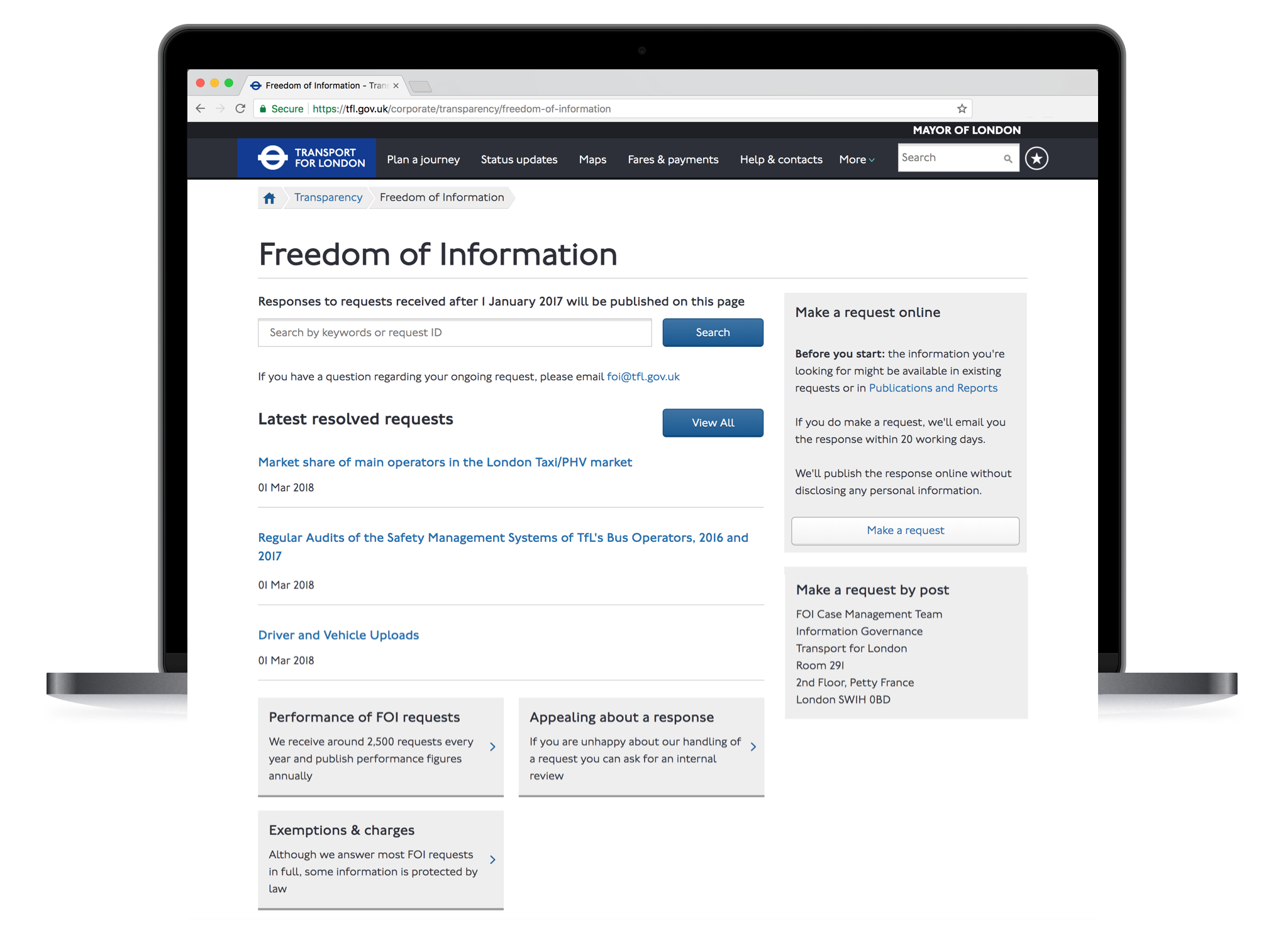
The context
What is Freedom of Information?
Freedom of Information (FOI) is a way for the general public to attain information and facts and figures, from public organisations.
What is TfL Freedom of Information?
TfL Freedom of Information is the place where the general public can submit FOI requests and uncover existing FOI answers relating to anything and everything TfL.
Why was there a need for a service?
The old service wasn’t fit for purpose anymore.
TfL FOI requests have been steadily increasing over the years. As such the old way of managing and processing FOI wasn’t effective. It was internal inefficiencies within the TfL FOI Team.
A digital product was defined as a solution to tackle this issue, to provide a better user experience, and to provide a better experience for the TfL FOI staff.
Discovery
We started the project from a standing start. The Freedom of Information Act, potential user needs and organisation objectives was alien to my colleague and I.
We were entering the unknown, and given we only had 3 weeks to deliver an entire product validated by both user and organisation, we threw ourselves into the deep end.
Observing and shadowing
Given the unknown and ambiguous context we found ourselves in, we worked within the TfL offices and spent as much time as possible with the TfL FOI Team.
We immersed ourselves in their world, observing and shadowing FOI Case Officers, user interactions and day to day processes.
Stakeholder workshops
We also held three co-discover and co-design workshops with stakeholders. In which we got hands on with them discovering issues with the existing product and service. And also getting their ideas for the product at low fidelity level.
“I moderated co-design workshops with stakeholders to uncover insight and align on direction”

Some of the co-discover workshop output
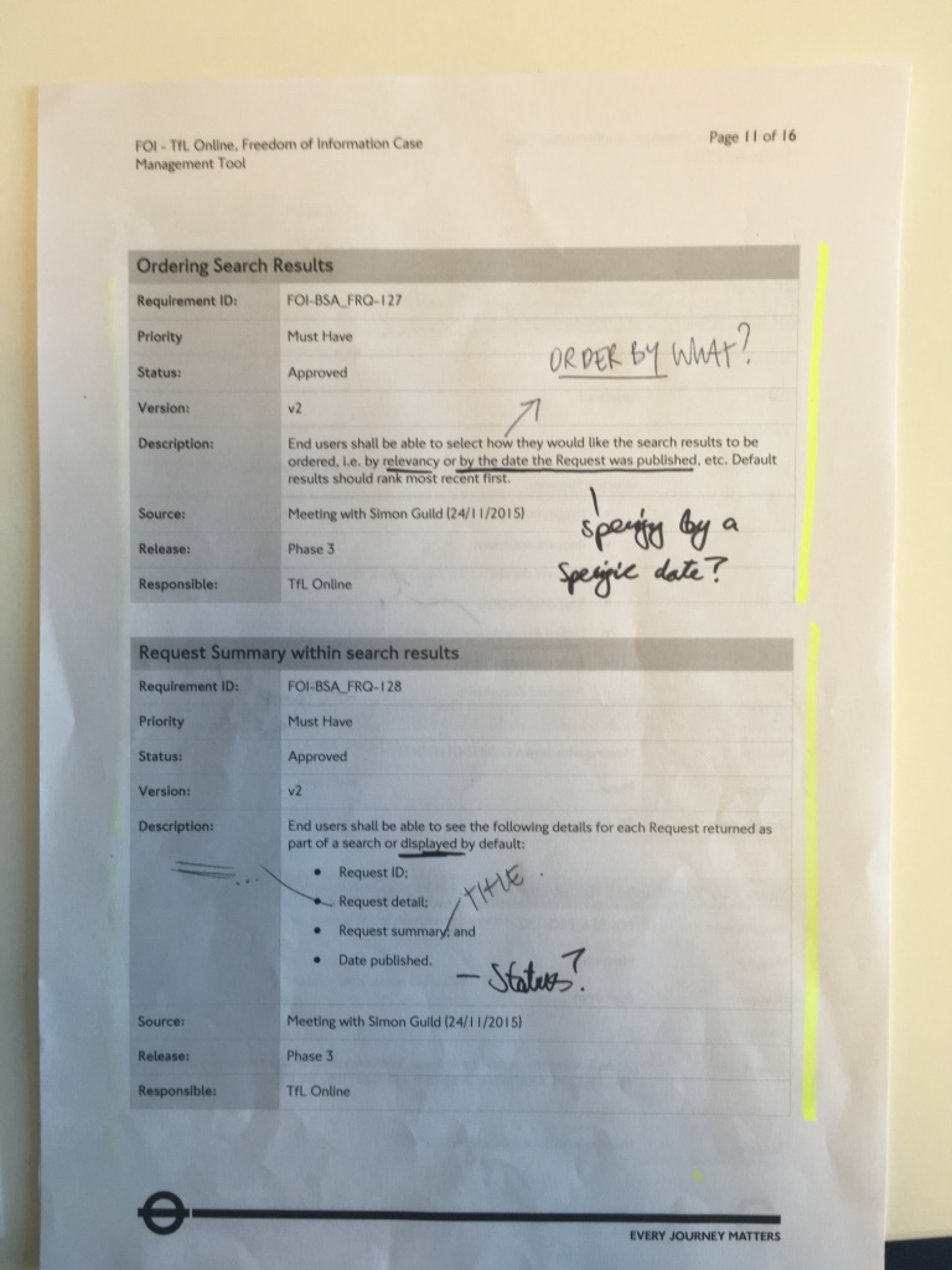

Depth interviews
To compliment the observation I also organised and led depth interviews with FOI Case Officers and the Product Owners.
Unearthing the organisations needs and objectives, getting their thoughts on the vision of the product, and how they saw the product working from a users point of view.
The depth interviews also proved valuable as the FOI Case Officers had a lot of user insights they were able to share with us.
Landscape review
During the Discovery phase I also completed a review of similar products and services.

GOV.UK FOI Review


Whatdotheyknow Review

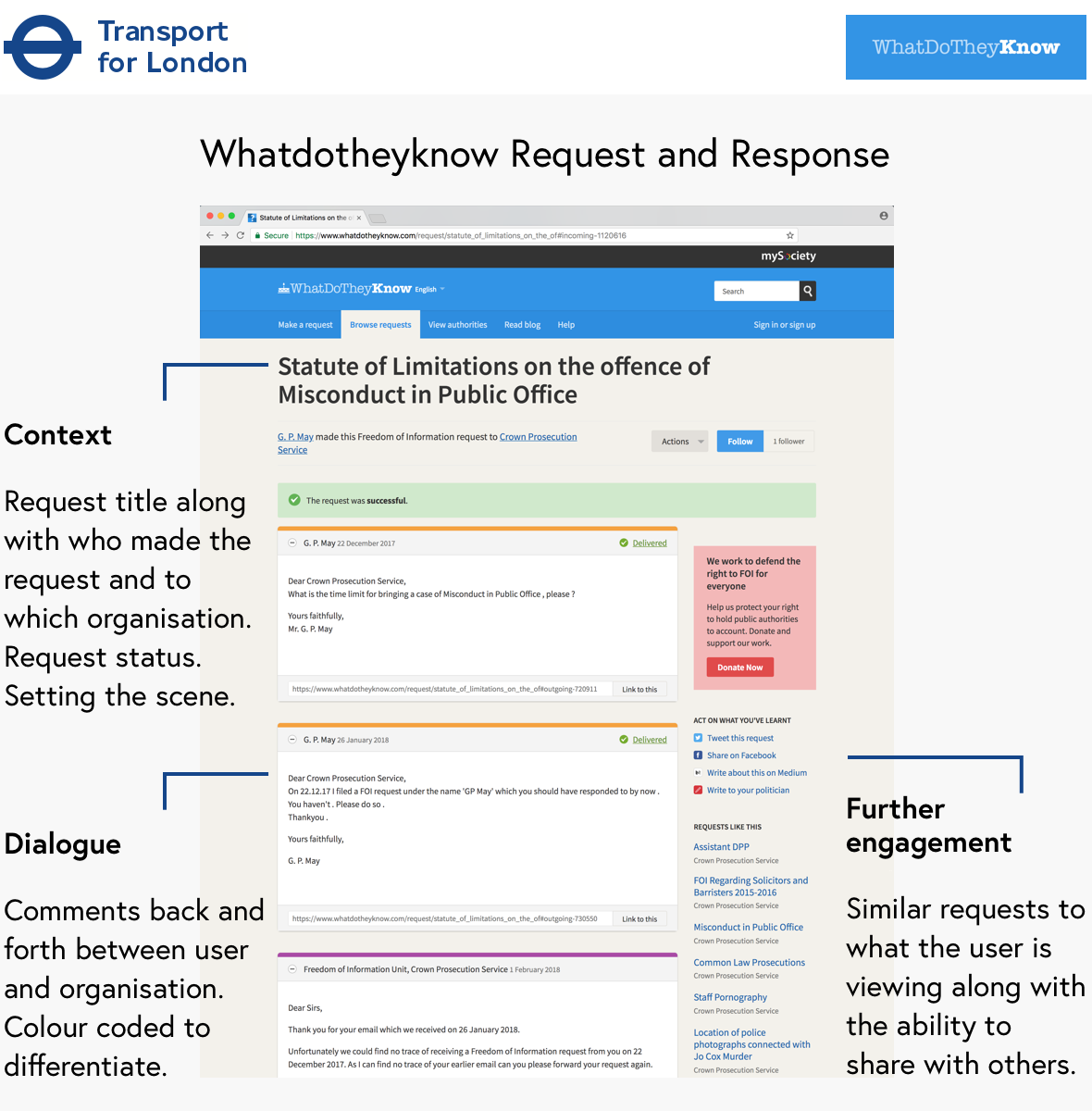

NHS FOI Review

The landscape review allowed me to:
⁃ Look at what they were doing well, and how
⁃ Run through common user journeys and test the user experience throughout
⁃ Identify improvements to be made, and that I could incorporate
“The competitor review proved to be a great source of visual and functionality inspiration throughout the project”
Ideation
With a solid base of research behind us we began ideation.
Mapping user journeys
We were aware of key user journeys that the product would have to support, these were uncovered during the Discovery phase.
They were:
1. Making an FOI request
2. Finding existing FOI requests and responses
3. Reviewing answered requests and acting upon them
With the user insight and inspiration gathered we started to map out the user journeys. We did so using Post-it notes so we could move at speed and try new ideas to streamline the journey.

Mapping the user journeys
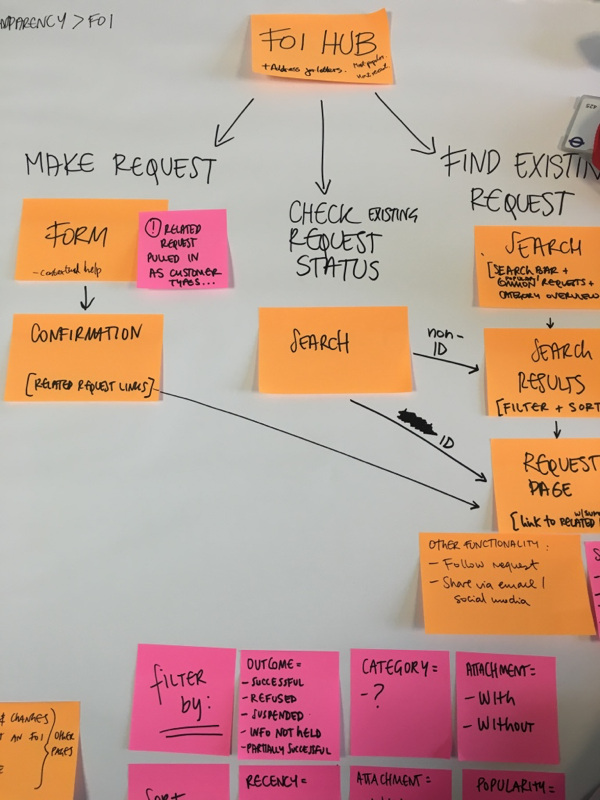
Lo-fi output at this stage to create and test ideas quickly
When we felt we had the journeys in a good place we presented back our thinking to the Product Owners and subject matter experts.
Getting their validation before digitising the journeys or creating screen designs was important. If we didn’t get their approval on the journey in it’s lo-fi form we would have wasted valuable time.
Designing the experience
With approval on the user journeys we began creating the designs and interactions for each stage of the journey.
We had been told the product would be largely used on desktop, given it's nature and typical user base. However we knew this may change over time, so with that in mind we designed mobile first, knowing that our designs would scale to work on desktop too.
Sketching on paper, whiteboards and creating page elements using Post-it notes that we could move around and create new pages with.



“The fidelity of the design grew as the direction and flow of the experience was getting validated, and feeling right”
Over the course of a week we cycled through many iterations of the product.
Through reviewing user insights, covering the range of use cases we needed to accommodate and also stakeholder feedback, by the end of the week we had a lifelike interactive prototype, ready to test with users.
At the same time we were also designing the information architecture and thinking about the full service experience of using TfL FOI.
Prototype, test, iterate
After a thorough week of designing and iterating our design efforts internally, we were in a good position to test the prototype with users.
I led an intense of week prototyping and iterating following feedback from the user testing sessions my colleague and I moderated.
“I led an intense week of prototyping, user testing and iterating”
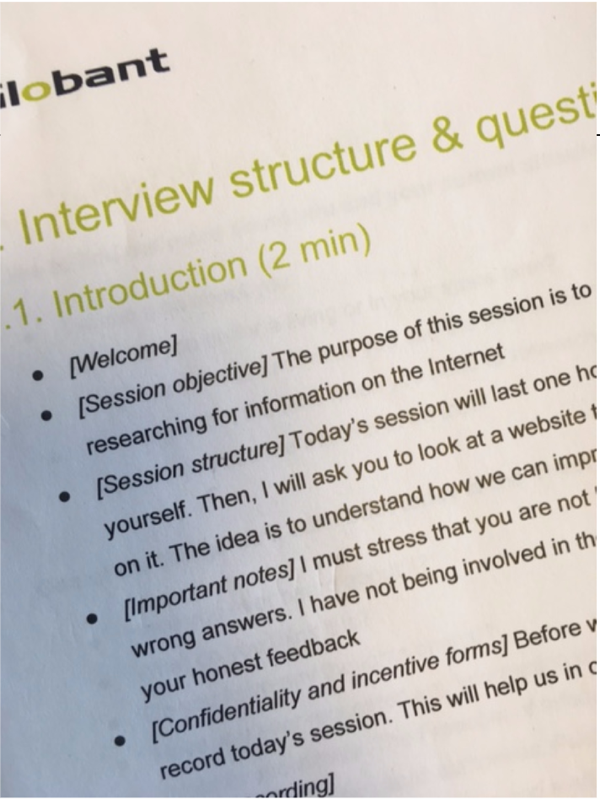
Discussion guide to aid conversation

InVision interactive prototype tested by users
We ensured that the TfL Engineering Team who were going to be building the product observed some of the sessions. I also got along the Product Owners and some TfL FOI Case Officers, just for them to see first hand what users experience.
From there we took our tested, iterated and fairly well validated prototype out onto the streets of London. We conducted Guerrilla usability testing with many more people. Getting a thorough and diverse viewpoint on the prototype and content.
“After the second round of user testing and iterating we took the prototype out onto the streets for Guerrilla Testing”

Annotations on the prototype

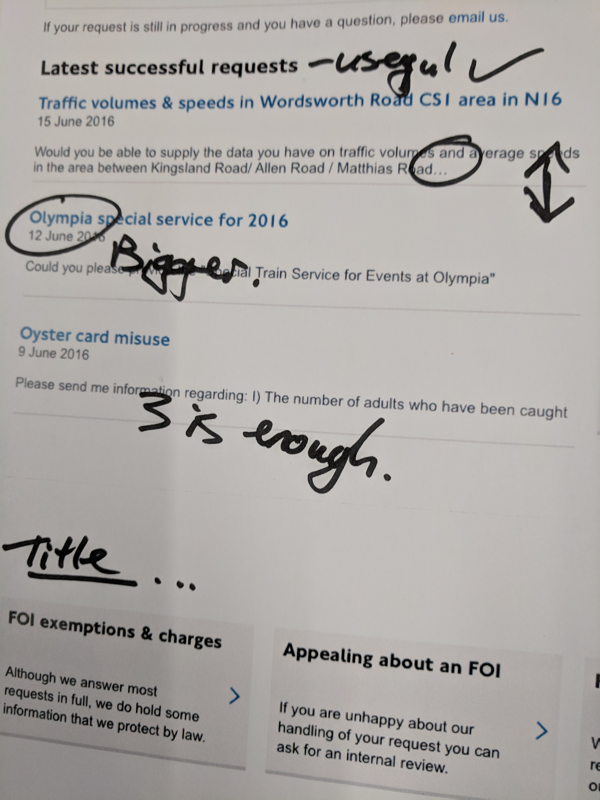
Transport for London Freedom of Information
The TfL Freedom of Information Hub, here the user can jump into a range of journeys to get to the outcome they require. Search and review latest requests given prominence to encourage users to look for their answer, before requesting.

Search
Search the entire TfL Freedom of Information database of requests and responses, sort and filter enables the user to find what they need quickly.

Make a request
A simple form with added functionality to improve the experience, and to improve internal organisation efficiencies.
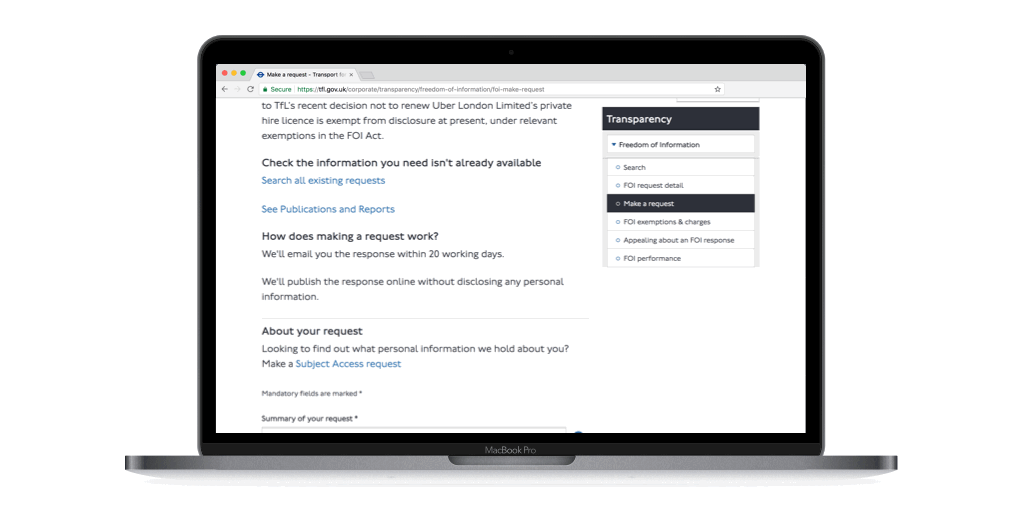
Request and response
Users can review the full request submitted by others, and the response from Transport for London. The information is formatted in an easy to read way.
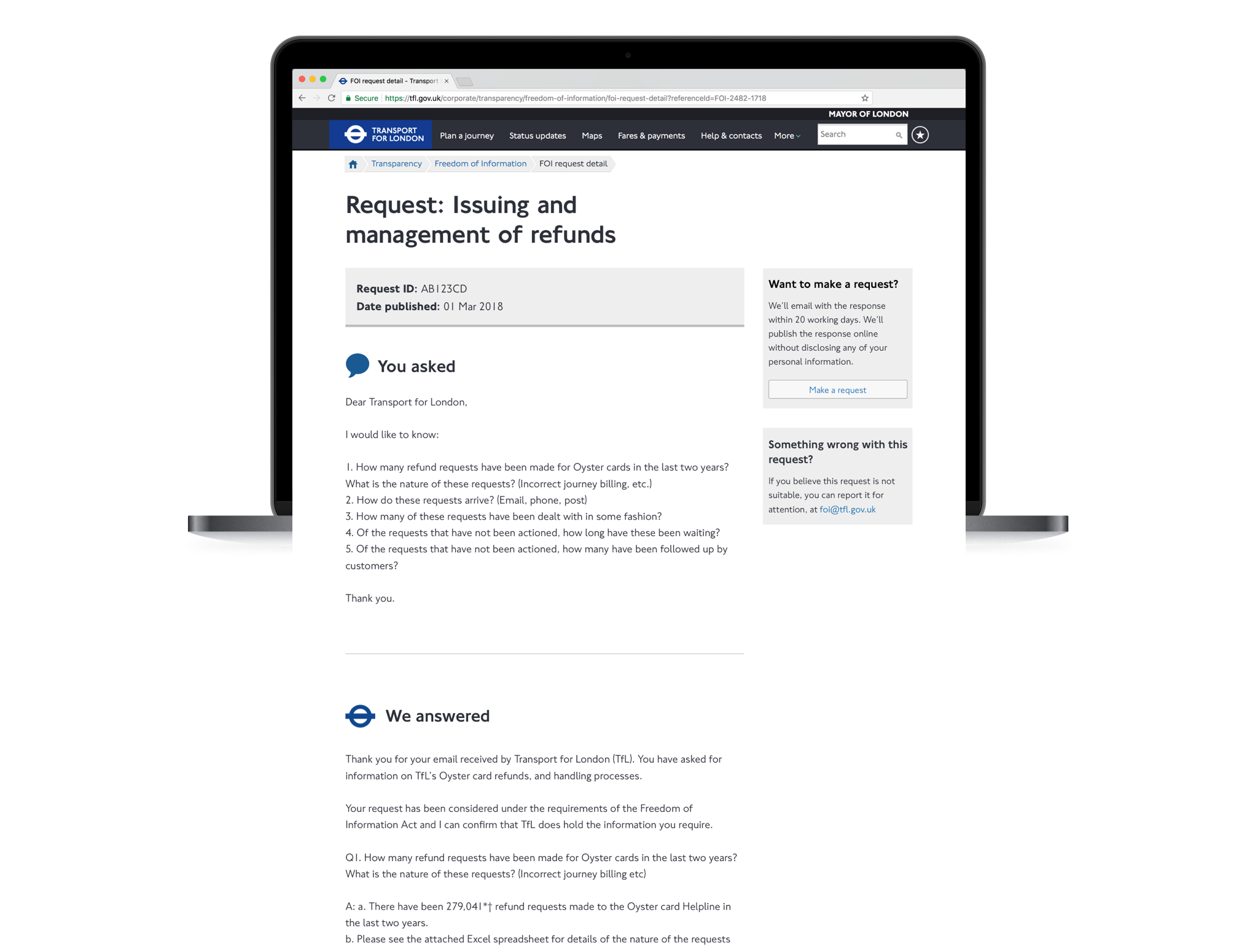
The impact
The product launched in January 2017, since then it has effectively served the public in giving them the access to the information they require.
TfL FOI Case Officers time has been freed up to focus on important case work and not reply to users requesting existing information. Users are self-serving and finding it themselves.
View the service
And in my spare time…
While working on this project I discovered Bots on Messenger and chatbots in general. Fascinated by the technology, user experience and general potential I thought Bots may have on all of us I looked into them.
It dawned on me that a Messenger Bot would work very well to deliver the TfL Freedom of Information service, or any Freedom of Information service for that matter.

TfL FOI Bot. Produced in 2017, this now looks like a typical GenAI Assistant